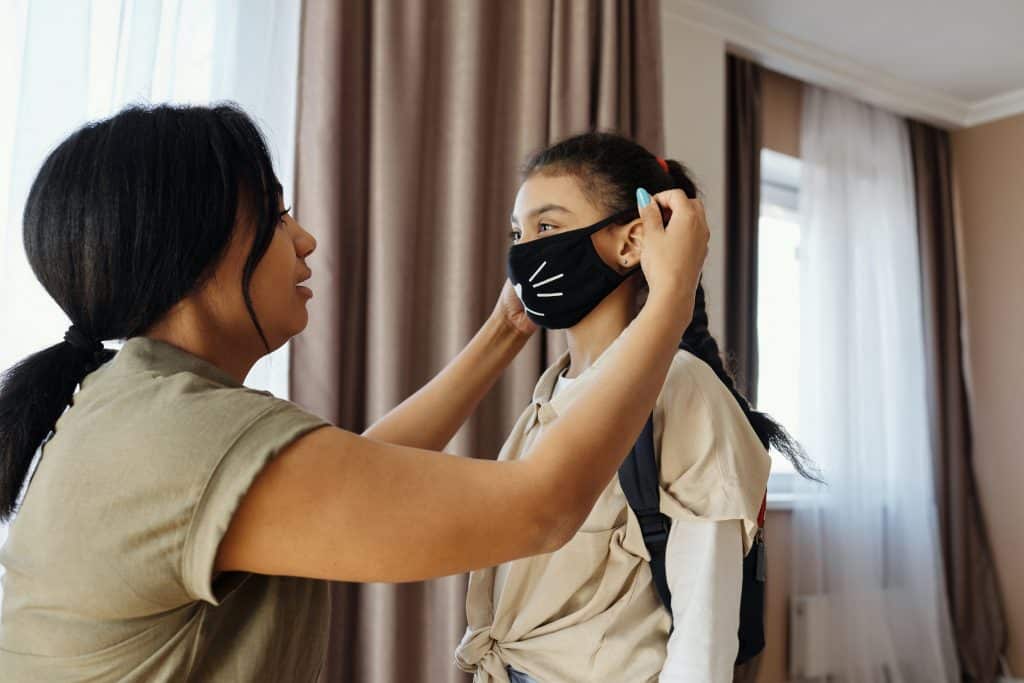As the school year begins and health precautions continue, the topic of mask-wearing becomes crucial for children, including those with autism. Whether your child attends school in person or engages in virtual learning, masks are likely to be a requirement in various community settings. From routine trips to the grocery store to doctor visits or outings to the zoo, navigating these situations can be challenging for children with autism due to the new societal expectation of wearing masks. However, with the right strategies and support, we can help our children adapt and feel comfortable with wearing masks in these different environments.
Table of Contents
Read more: ADHD Parenting Strategies: What To Know
Some children have no problem adding a mask as a new daily wardrobe staple.
…but what if your child refuses?
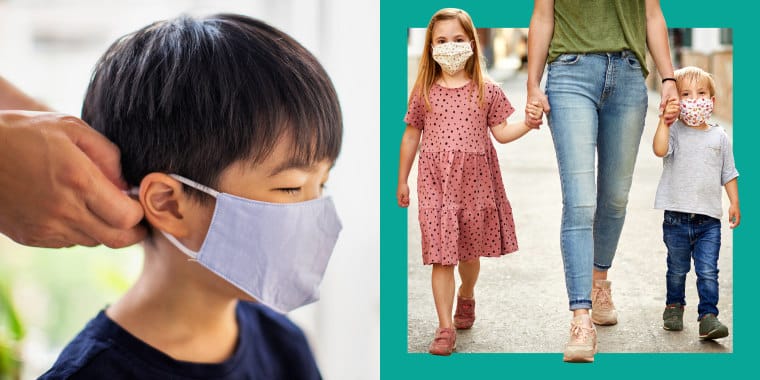
Tantrums. Protests. Kicking. Screaming. Sound familiar? If your child is one of the many who aren’t as thrilled to sport a mask, you are not alone! This is a common struggle that has been shared by many a parent during the past few months. In an effort to support our parents, we have gathered several evidence-based strategies that can help children with autism (and ADHD) wear masks. Take a look below!
Use Customization to Encourage Mask Wearing
When you started wearing a mask, did you just pick up the first one you saw, or did you consider your preferences? Most of us tend to be more invested in activities, even those that are less preferred, when we have input on the front end of things. Gain buy-in from your child by including them in the purchase process.
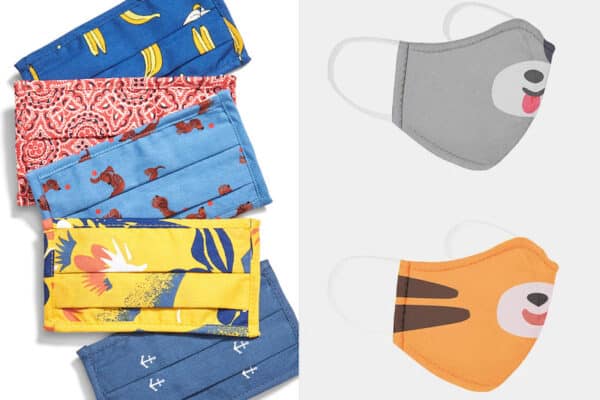
The market is currently filled with a vast array of mask patterns, colors, and styles! From favorite cartoon characters to sports to silly sayings, there are many ways to incorporate a child’s interest with masks that are currently for sale.
Involving children in personalizing their own masks can also be a great way to get them on board the mask train. One example of this could be tie-dying a plain white mask. Other kids may be more excited about the idea of adding monograms, jewels, or other embellishments. Truly, the opportunities for imagination and creativity are boundless!
Read more: Fidget Toys for ADHD: Do They Help?
When it comes to helping children with autism wear masks, personal preference plays a significant role. It’s crucial to consider the fit and feel of the mask. While some children may resist traditional medical masks, they might find comfort in a silky smooth neck gaiter. Additionally, different mask styles vary in their proximity to the nose. Finding the right fit for your child may involve a bit of trial and error, so don’t hesitate to explore different options if the current mask style consistently causes sensory issues. The goal is to find a mask that your child feels comfortable wearing, ensuring their safety and well-being.
Use Choice as a Tool
Once you’ve found a way to personalize your child’s mask selection, find ways to offer a choice on a regular basis during mask-wearing opportunities. Sometimes this choice can look like offering 2-3 masks to choose from. (“Would you like to wear your dinosaur mask or your lego mask?”)
Once a mask is selected, another choice can be offered as to when they will put it on. (“Would you like to put your mask on in the car, or wait until we get out?”) A choice can also be offered as to how they will put it on. (“Would you like mom or dad to help you put your mask on?”)
You’ll notice that, while options are given in the examples above, the ultimate result is the same. Regardless of what choices are made, the presented options still end with the child wearing the mask! When options are provided, your child can feel in control of the situation by being given autonomy within appropriate limits.
Goally | The Safest Tablet for Kids

Set Expectations
Before you simply tell your child to put on a mask, set them up for success by being explicit and clear about your expectations. Let your child know when they will need to wear their mask. (“While we are in Target, you will need to keep your mask on.”) Let them know when they can remove their mask. (“When we get back to the car, you can take your mask off.”)
Let them know about how long they will be expected to keep their mask on. (“This will be a quick/little longer trip.”) It also can be helpful to make clear an appropriate expectation for how they should communicate with you if they are feeling uncomfortable or need to take a break. (“While we’re at the zoo, if you are having a hard time with your mask or need a break, first tell me, then we can find a spot to take a minute mask break.”)
Add a Visual
For both old and young alike, some directions, if simply spoken, “go in one ear and right out the other.” To make expectations a little more clear and readily remembered, visual support can make a great difference.
A first/then board is a prime example of useful visual support for this type of scenario. While setting expectations using a first-then statement (“First, you will wear your mask for ten minutes, then you can have a popsicle.”), a visual may make this more concrete for your child. A picture of them wearing a mask can be included under the “first” section, and a picture of their preferred treat or activity can be included under the “then” spot.
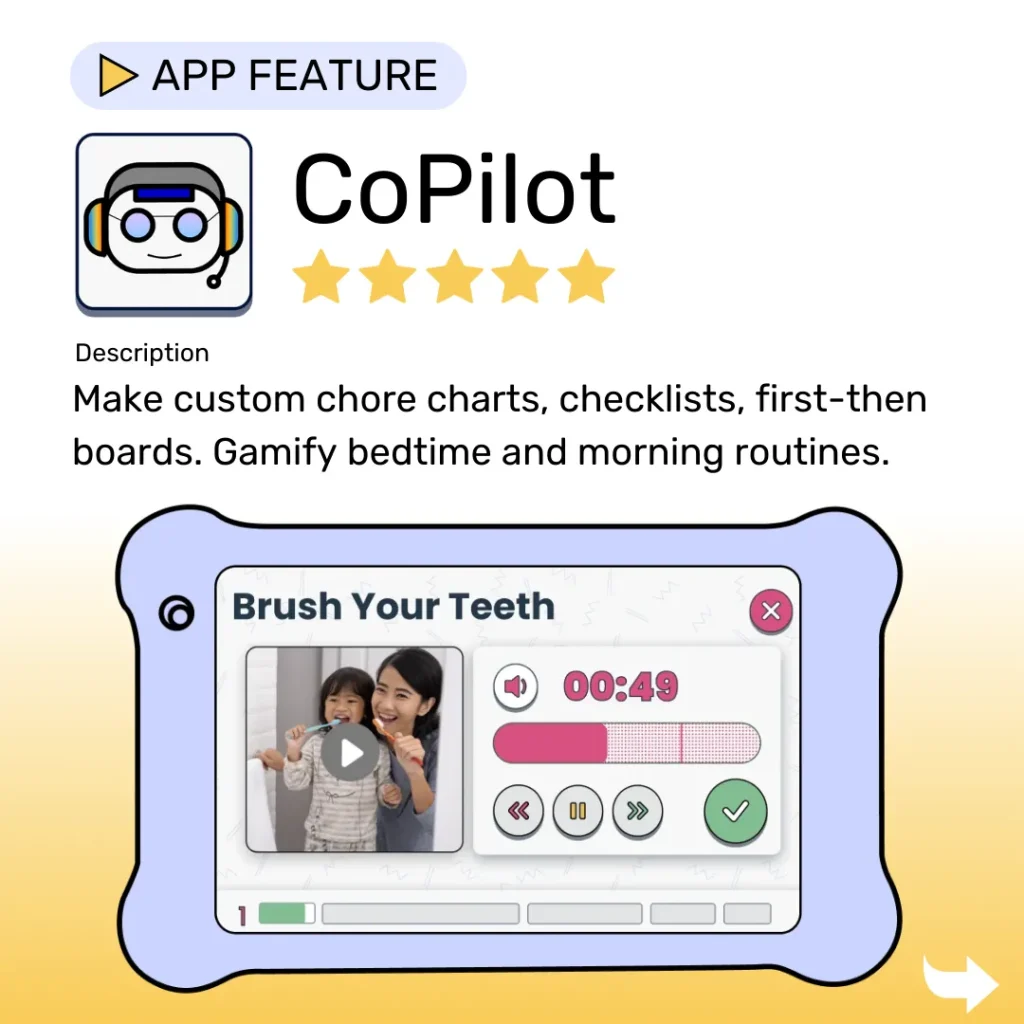
A visual timer is another way to help delineate expectations. Either through a standalone handheld timer or a tool such as Goally, creating a way for your child to visualize the passage of time can help ease anxiety and make expectations for how long they need to wear a mask more tangible for your child.
Just like many adults, children can also love seeing a visual of their progress toward goals. Creating a chart or graph of positive mask-wearing behaviors at home can be another fun way to reinforce these skills.
Keep it Fun
While working on this new skill, kick the process off by associating (or pairing) it with a fun, preferred activity. Try to save access to a special activity or item for times when your child is wearing a mask.
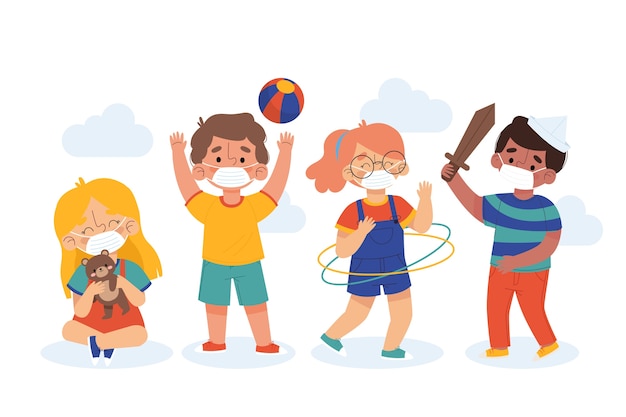
See more: How to Make Friends with Autism
With practice, your child will learn that: Wearing a mask = fun, special times! Mask comes off = fun, special time ends! This strategy can be helpful for getting over initial resistance and should be gradually faded out once your child gets accustomed to wearing a mask for the desired length of time.
A positive, fun outlook on mask-wearing from others in your child’s life can also go a long way. If the adults in the house are consistently modeling a positive outlook around their child (“I get to wear my blue mask today at work! Isn’t it so fun? I think it makes me look like a superhero!”), they may be more likely to follow suit.
Start small | Helping Children With Autism Wear Masks
Lastly, let’s remember to manage our own expectations as parents! If your child currently completely refuses to touch their mask, it may be best to taper your expectations and gradually build-up to the ultimate goal.
Rather than an all-or-nothing approach, set small, achievable goals that can strategically get your child’s mask-wearing to the level where it needs to be for school or other settings. For some children, rewarding the first step of touching a mask may be the starting point. For others, you may want to start with shorter lengths of time and gradually increase the time. Figuring out what helps children with autism wear masks is a process of trial and error, especially because each child is unique.
Goally | 100+ Streaming Video Classes
Does your child need some extra guidance on building essential life skills? Goally’s skill building tablet for kids includes a TV app that has the most robust video library of skills training videos for kids. Ranging from content like “How to Brush Your Teeth” to “How to Make Friends at School,” we have dozens of interactive video lessons for kids with thinking and learning differences.

HERE’s a video explaining how to works.
Autism Masks
Regardless of where your child is in their mask-wearing journey, remember that it is a new skill and can be challenging for them. Taking the time to catch them wearing their mask appropriately (“I love how you are wearing your mask around your nose right now!”) and rewarding them for small wins can go a long way!
FAQ’s About Helping Children With Autism Wear Masks
How can I encourage my child with autism to wear a mask?
Encourage your child with autism to wear a mask by using positive reinforcement, such as praise or small rewards, and by modeling mask-wearing behavior yourself.
What type of mask is best for a child with autism?
The best type of mask for a child with autism is one that is comfortable, well-fitting, and made from soft, breathable materials like cotton.
How can I help my child with autism adjust to wearing a mask?
Help your child with autism adjust to wearing a mask by practicing at home for short periods, using visual aids like social stories, and providing sensory breaks as needed.
What if my child with autism has sensory issues with masks?
If your child with autism has sensory issues with masks, try different materials and styles, use a gradual desensitization approach, and consider attaching fidget toys or chewable items to the mask straps.
Can I decorate my child's mask to make it more appealing?
Yes, you can decorate your child's mask with stickers, drawings, or iron-on patches of their favorite characters or interests to make it more appealing and encourage them to wear it.
Rachel Dowse is a Goally team member, former middle school teacher, and a practicing BCBA residing in Nashville, TN. When she’s not working, she loves spending time with her husband and two children hiking, playing outdoors, and drinking good coffee with a book in hand. Editor’s note: This information is not meant to diagnose or treat and should not take the place of personal consultation, as needed, with a qualified healthcare provider and/or BCBA.
This post was originally published on 12/29/2020. It was updated on 04/08/2024.

Goally
We help parents teach their kids life skills, like doing bedtime and morning independently. Backed by science, we incorporate evidence-based practices and expert-informed designs in all of our apps and content.
